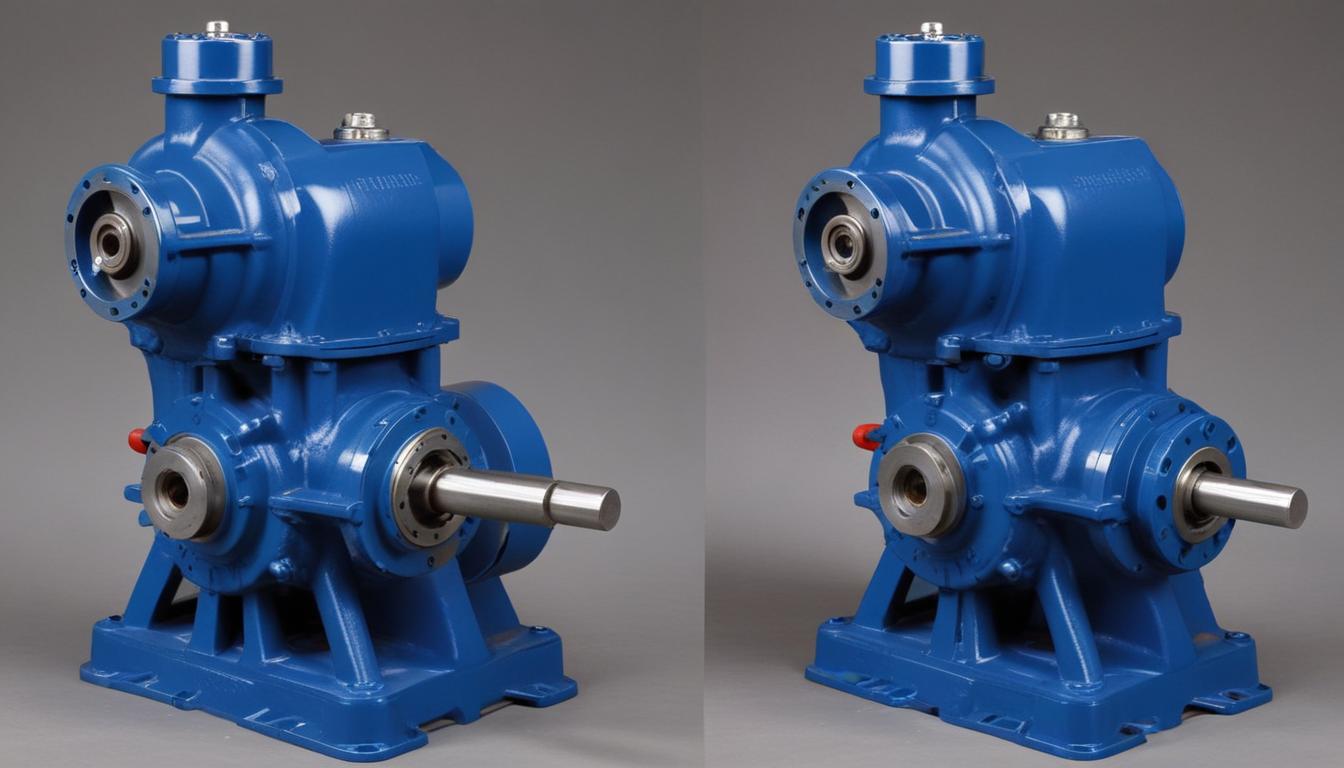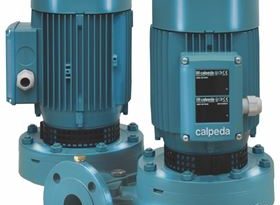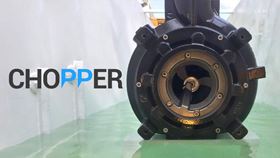rotary vs reciprocating pumps
Rotary pumps operate based on the principle of continuous movement, where components such as gears, vanes, or screws rotate to move fluid through the pump. This rotational motion creates a sealed chamber that traps the fluid and transports it from the inlet to the outlet. The design ensures a smooth and steady flow, making rotary pumps ideal for applications requiring consistent pressure and flow rates. Common types of rotary pumps include gear pumps, screw pumps, and vane pumps, each utilizing different mechanisms to achieve fluid displacement.
In contrast, reciprocating pumps function through a back-and-forth (reciprocating) motion of a piston or plunger within a cylinder. This alternating movement creates a vacuum that draws fluid into the pump during the suction stroke and then forces it out during the discharge stroke. Reciprocating pumps are known for their ability to handle high pressures and are often used in applications requiring precise flow control. The key components typically include cylinders, pistons, valves, and a crankshaft or cam mechanism to convert the rotary motion into linear movement.
The fundamental differences in their operating mechanisms lead to distinct performance characteristics:
| Aspect | Rotary Pumps | Reciprocating Pumps |
|---|---|---|
| Motion | Continuous rotational | Intermittent reciprocating |
| Flow Type | Steady and smooth | Pulsating and precise |
| Pressure Handling | Moderate | High |
| Efficiency | Generally higher for continuous flows | Higher for variable or precise flows |
Understanding the comparison between these two pump types is crucial for selecting the appropriate pump based on specific operational requirements. Factors such as desired flow rate, pressure levels, and the nature of the fluid being pumped play significant roles in determining whether a rotary or reciprocating pump is more suitable for a given application.
performance comparison
When evaluating the performance of rotary and reciprocating pumps, several key factors must be considered to determine which type best suits specific operational needs. These factors include flow rate, pressure capacity, efficiency, pulsation, and suitability for different types of fluids.
Flow Rate is a critical aspect in pump performance. Rotary pumps excel in applications requiring a steady and continuous flow due to their continuous rotational motion. This makes them ideal for systems where maintaining a constant flow rate is essential, such as in hydraulic systems or lubrication processes. On the other hand, reciprocating pumps provide pulsating flow, which can be advantageous in applications that require precise control over the fluid movement, such as in dosing or metering systems.
Pressure Capacity differentiates the two pump types significantly. Reciprocating pumps are designed to handle high-pressure applications, making them suitable for tasks like water jet cutting, high-pressure cleaning, and hydraulic presses. Their ability to generate high pressures is due to the direct action of the pistons or plungers, which can exert substantial force on the fluid. Conversely, rotary pumps are generally better suited for moderate pressure applications. While they may not achieve the same high-pressure levels as reciprocating pumps, their design ensures consistent performance under these conditions.
Efficiency is another vital consideration. Rotary pumps typically offer higher efficiency for continuous flows because their moving parts are in constant motion, reducing the energy losses associated with start-and-stop cycles. This makes them more energy-efficient in applications where the pump operates continuously over extended periods. Reciprocating pumps, while highly efficient in applications requiring precise flow control, may experience reduced efficiency in continuous operations due to the intermittent nature of their movement.
Pulsation in flow is a characteristic inherent to reciprocating pumps due to their back-and-forth motion. While this pulsating flow is beneficial for applications needing precise fluid control, it may require additional damping mechanisms in systems where a smooth flow is desired. Rotary pumps, conversely, produce a smooth and steady flow without significant pulsation, reducing the need for such compensatory measures and simplifying system design.
To further delineate the performance differences, the following table summarizes key performance metrics:
| Performance Aspect | Rotary Pumps | Reciprocating Pumps |
|---|---|---|
| Flow Rate | Continuous and steady | Pulsating and adjustable |
| Pressure Capacity | Moderate | High |
| Efficiency | High for continuous operations | High for intermittent or precise operations |
| Pulsation | Minimal | Significant |
| Maintenance Requirements | Generally lower due to fewer moving parts | Higher due to reciprocating components |
Maintenance and Reliability also play pivotal roles in performance. Rotary pumps tend to have fewer moving parts, which often translates to lower maintenance requirements and enhanced reliability over time. Their design minimizes wear and tear, making them suitable for applications where downtime must be minimized. Reciprocating pumps, with their complex motion involving pistons or plungers, may require more frequent maintenance to ensure optimal performance and prevent mechanical failures.
In summary, the comparison of rotary and reciprocating pumps in terms of performance highlights their distinct advantages and suitability for various applications. Understanding these performance characteristics is essential for selecting the right pump type to meet specific operational demands effectively.
applications and uses
Rotary pumps and reciprocating pumps are employed across a diverse range of industries, each type lending itself to specific applications based on their inherent operational characteristics.
Rotary pumps are widely utilized in scenarios that demand a steady and continuous flow. Common applications include:
- Hydraulic Systems: Providing consistent pressure and flow required for machinery and equipment operation.
- Oil and Gas Industry: Facilitating the transfer of lubricating oils and other fluids through pipelines.
- Chemical Processing: Ensuring smooth and precise handling of chemicals in manufacturing processes.
- Food and Beverage: Moving ingredients and products without introducing pulsation, maintaining product quality.
- Automotive: Lubrication systems in engines and other vehicle components.
- Pharmaceuticals: Handling sensitive fluids with minimal pulsation to maintain purity and consistency.
In contrast, reciprocating pumps are preferred in applications that require high pressure or precise control over fluid flow. Key uses include:
- Water Supply Systems: High-pressure water delivery for municipal or industrial use.
- Petrochemical Industry: Managing high-pressure fluids essential for refining processes.
- Hydraulic Presses: Providing the necessary force for metal forming and other heavy-duty tasks.
- Water Jet Cutting: Delivering high-pressure water streams for precise material cutting.
- Pumping Stations: Ensuring reliable operation under variable flow and pressure conditions.
- Meteorological Instruments: Precise fluid control in equipment used for weather monitoring.
The table below highlights typical applications for each pump type:
| Industry | Rotary Pumps | Reciprocating Pumps |
|---|---|---|
| Oil and Gas | Lubrication and hydraulic fluid transfer | High-pressure injection and refining processes |
| Chemical Processing | Continuous chemical transport | Precision dosing and high-viscosity fluid handling |
| Automotive | Engine lubrication systems | Fuel injection systems |
| Pharmaceuticals | Maintaining product consistency | Precise ingredient mixing |
| Food and Beverage | Smooth ingredient handling | Packaging and high-pressure cleaning |
Additionally, the adaptability of these pumps allows them to be integrated into various systems tailored to specific operational needs. Rotary pumps are often chosen for their compact design and ability to handle a range of fluid viscosities, making them versatile for continuous processing environments. On the other hand, reciprocating pumps are selected for applications where maintaining high pressure or achieving precise flow control is critical, despite their generally larger size and complexity.
In large-scale industrial setups, the comparison of these pump types ensures that systems are optimized for efficiency, reliability, and performance based on the specific demands of each application. Factors such as fluid characteristics, required pressure levels, and operational continuity play pivotal roles in determining the most suitable pump type to deploy.
maintenance and reliability
 Rotary pumps generally require less frequent maintenance compared to their reciprocating counterparts. The simplicity of their design, characterized by fewer moving parts, reduces the likelihood of mechanical failures and minimizes the need for regular servicing. Routine maintenance tasks for rotary pumps typically include:
Rotary pumps generally require less frequent maintenance compared to their reciprocating counterparts. The simplicity of their design, characterized by fewer moving parts, reduces the likelihood of mechanical failures and minimizes the need for regular servicing. Routine maintenance tasks for rotary pumps typically include:
- Lubrication: Ensuring that all moving components are adequately lubricated to prevent wear and tear.
- Seal Inspection: Regularly checking seals for signs of wear or leakage to maintain optimal performance.
- Cleaning: Keeping the pump and its components free from contaminants and build-up to ensure smooth operation.
- Component Replacement: Periodically replacing wear-prone parts such as gears or vanes to extend the pump’s lifespan.
In contrast, reciprocating pumps have more complex mechanisms, including pistons, valves, and diaphragms, which contribute to higher maintenance demands. The key maintenance activities for reciprocating pumps include:
- Valve Maintenance: Inspecting and replacing valves to prevent leaks and ensure proper fluid flow.
- Piston and Cylinder Care: Checking for wear and ensuring tight tolerances to maintain high-pressure capabilities.
- Seal Replacement: Regularly replacing seals to prevent fluid leakage and maintain pump efficiency.
- Vibration Monitoring: Monitoring and addressing vibrations that can indicate misalignment or wear in moving components.
The following table highlights the differences in maintenance requirements and reliability between rotary and reciprocating pumps:
| Maintenance Aspect | Rotary Pumps | Reciprocating Pumps |
|---|---|---|
| Frequency of Maintenance | Lower due to fewer moving parts | Higher due to complex mechanisms |
| Common Maintenance Tasks | Lubrication, seal inspection, cleaning, component replacement | Valve maintenance, piston and cylinder care, seal replacement, vibration monitoring |
| Reliability | High reliability with minimal downtime | Potential for increased downtime due to more frequent maintenance |
| Ease of Maintenance | Generally easier due to simpler design | More challenging, often requiring specialized skills |
| Cost of Maintenance | Lower maintenance costs | Higher maintenance costs associated with parts and labor |
Reliability is a critical factor influenced by the inherent design of each pump type. Rotary pumps are renowned for their durability and consistent performance over long periods. Their continuous motion and fewer mechanical interruptions reduce the stress on components, leading to extended operational life and fewer unexpected failures. This reliability is particularly advantageous in applications where uninterrupted service is essential.
On the other hand, reciprocating pumps offer high reliability in managing demanding tasks such as high-pressure operations. However, their complex moving parts can be more susceptible to wear and require meticulous maintenance to sustain their performance. Proper maintenance practices are crucial to prevent issues such as valve leaks or piston wear, which can compromise pump reliability and lead to operational inefficiencies.
Implementing a comprehensive maintenance schedule is essential for both pump types to ensure optimal performance and longevity. Predictive maintenance techniques, such as vibration analysis and thermal imaging, can be employed to monitor the condition of pump components and address potential issues before they escalate into significant problems. Additionally, adherence to manufacturer-recommended maintenance guidelines enhances the reliability and efficiency of both rotary and reciprocating pumps.
In summary, while rotary pumps offer lower maintenance requirements and higher reliability due to their simpler design, reciprocating pumps provide robust performance in high-pressure scenarios but necessitate more frequent and specialized maintenance. The choice between the two should consider the specific operational demands, maintenance capabilities, and reliability expectations of the intended application.
cost considerations
When evaluating the financial aspects of selecting between the two pump types, several key factors come into play, including initial purchase price, installation costs, operational expenses, and long-term maintenance investments.
Initial Purchase Price is a significant consideration. Generally, rotary pumps tend to have a lower upfront cost compared to reciprocating pumps. This is largely due to their simpler design and fewer moving parts, which reduce manufacturing complexities and costs. Reciprocating pumps, with their more intricate mechanisms involving pistons, valves, and precision components, typically command a higher initial investment.
Installation Costs also vary between the two pump types. Rotary pumps often require less extensive installation procedures due to their compact and modular designs. This can result in lower labor and material costs during setup. In contrast, reciprocating pumps may necessitate more elaborate installation processes, including specialized mounting, alignment, and integration with existing systems, thereby increasing overall installation expenses.
Operational Expenses encompass energy consumption, efficiency, and the cost of consumables. Rotary pumps generally offer better energy efficiency for continuous operation scenarios, leading to lower electricity bills over time. Their ability to maintain a steady flow without frequent starts and stops minimizes energy wastage. On the other hand, reciprocating pumps may incur higher operational costs due to their intermittent motion and the energy required to handle high-pressure tasks. However, in applications where precise flow control is essential, reciprocating pumps can provide cost-effective performance despite higher energy usage.
Maintenance and Replacement Costs are critical for understanding the long-term financial impact. As previously discussed, rotary pumps typically have lower maintenance requirements and costs because of their fewer moving parts and simpler design. Routine maintenance tasks are usually straightforward and less time-consuming, translating to reduced labor costs. Conversely, reciprocating pumps often require more frequent maintenance and the replacement of more components, such as seals, valves, and pistons. These additional maintenance activities can lead to higher ongoing costs and potential downtime, which should be factored into the overall cost analysis.
Lifecycle Cost analysis provides a comprehensive view by considering all costs associated with the pump over its operational life. While rotary pumps may offer lower initial and maintenance costs, reciprocating pumps might provide better value in specific high-pressure or precise-flow applications despite their higher costs. The total cost of ownership should account for factors such as expected lifespan, reliability, efficiency, and the specific demands of the application.
The following table summarizes the cost considerations for rotary and reciprocating pumps:
| Cost Aspect | Rotary Pumps | Reciprocating Pumps |
|---|---|---|
| Initial Purchase Price | Generally lower due to simpler design | Higher due to complex mechanisms |
| Installation Costs | Lower, simpler installation | Higher, more complex setup |
| Operational Expenses | More energy-efficient for continuous flow | Higher energy usage for high-pressure tasks |
| Maintenance and Replacement | Lower, fewer moving parts | Higher, more components to maintain |
| Lifecycle Cost | Cost-effective for continuous and moderate applications | Value in high-pressure and precise-flow applications |
In conclusion, the comparison of cost considerations between rotary and reciprocating pumps reveals that rotary pumps generally offer lower initial and maintenance costs, making them suitable for applications with continuous flow and moderate pressure requirements. Reciprocating pumps, while more expensive upfront and in maintenance, provide essential benefits in high-pressure and precise-flow scenarios that can justify the additional costs in specific industrial contexts. Careful analysis of the application’s demands and a comprehensive cost-benefit evaluation are essential in determining the most economically viable pump type.




